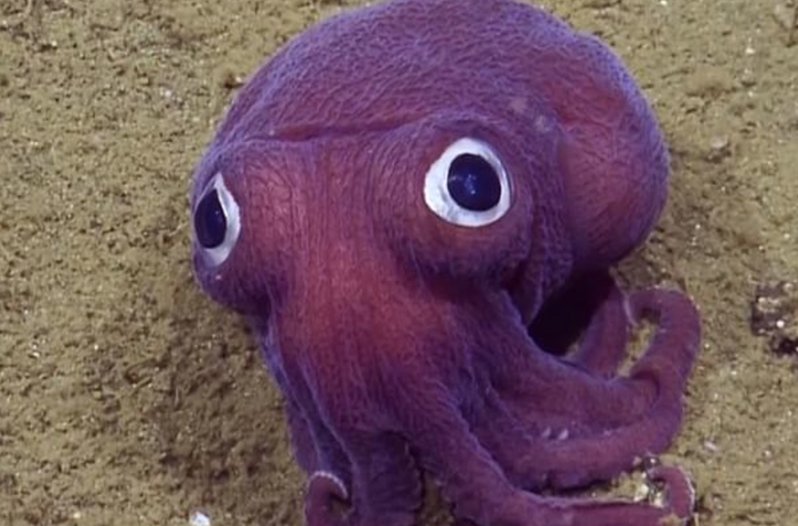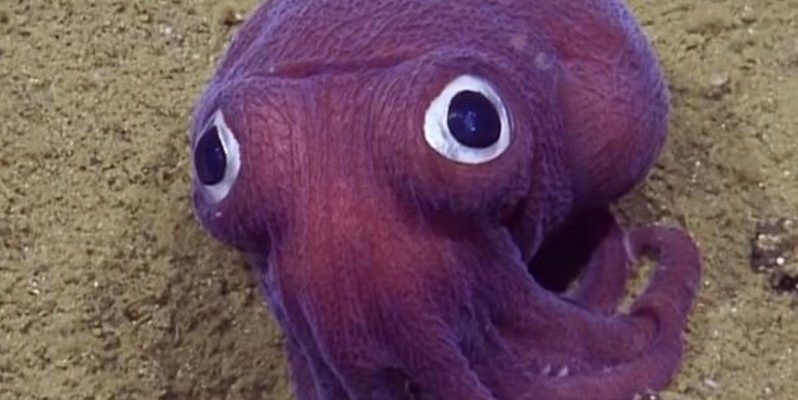
The giant squid has long fascinated scientists and casual ocean enthusiasts alike, sparking countless tales and studies. But there’s so much more to them than their impressive size and elusive nature. From their incredible adaptations to their mysterious behavior, these creatures are nothing short of extraordinary. So, let’s dive into ten cool facts about the giant squid that you probably didn’t know!
1. They Can Be Enormous—But Not Always
When people think of giant squids, they often picture a massive beast lurking in the depths of the ocean, ready to snag a sailor or two. It’s true that they can grow to astonishing lengths—some estimates say they can reach up to 43 feet! That’s longer than a bus! However, the average giant squid typically measures about 33 feet.
What really makes their size epic is their mantle, which is the main part of their body. It’s this area that houses their organs and gives them that big, eye-catching shape. Their long tentacles—up to 30 feet—are used for hunting. Imagine having arms that could stretch across a room, all the while being super dexterous!
2. Their Eyes Are the Size of Basketballs
You might think that the giant squid’s size would come with equally impressive features, and you’d be right! One of their most impressive attributes is their eyes, which can grow up to the size of a basketball. That’s almost 10 inches across!
These enormous eyes serve a crucial purpose. In the dark, deep ocean where light barely penetrates, having large eyes helps them see better in low light conditions. It’s like having a pair of night-vision goggles. This adaptation allows them to hunt effectively and avoid predators, making them formidable creatures of the deep.
3. They Have a Unique Method of Movement
Ever watched a fish swim? They glide effortlessly through the water thanks to their fins. The giant squid, on the other hand, employs a different strategy. They use a form of jet propulsion, which is pretty cool!
Here’s how it works: they take water into their bodies and then forcefully expel it out through a siphon. This sudden burst of water propels them in the opposite direction. Think of it like how you’d shoot out of a pool using a kick. This technique not only helps them move quickly but also allows them to change direction swiftly, which is key for escaping predators.
4. They Hunt with Their Tentacles
The giant squid’s tentacles are not just for show; they are highly specialized hunting tools. Equipped with suckers lined with sharp, chitinous rings, these tentacles can grasp and hold onto prey tightly.
When a giant squid senses an opportunity—like a fish or even other squid—it can shoot out its tentacles in a flash, wrapping around the unsuspecting victim. Once caught, the prey is dragged toward its beak, which is similar to that of a parrot and is capable of shredding its meal. This whole process is quick, efficient, and a little bit terrifying!
5. They’re Masters of Disguise
Ever heard of camouflage? Well, the giant squid takes it to the next level! These creatures have specialized cells called chromatophores that allow them to change color and even texture.
It’s like having a built-in mood ring! This ability helps them blend in with their surroundings, making it harder for predators or prey to spot them. Imagine you’re at a party, and you can turn invisible or blend in with the wallpaper—that’s what the giant squid can do! This not only helps them avoid dangers but also aids their hunting strategy.
6. They’re Hard to Study
Despite their impressive size, giant squids are notoriously tricky to study. They live deep in the ocean, often at depths of 1,000 to 2,000 feet. Imagine trying to observe a creature that prefers to hang out in the dark, cold depths of a swimming pool while you’re standing on the edge!
Most of what we know about them comes from washed-up specimens or footage captured by underwater cameras. Even researchers equipped with submersibles find it hard to spot these elusive creatures in their natural habitat. So, while their size might be giant, their population remains a mystery.
7. They Have a Short Life Span
You might think that with their size and strength, giant squids live long, fulfilling lives. However, that’s not the case! Most giant squids live only about 3 to 5 years—shorter than many smaller fish.
This brief life span could be attributed to their position in the food chain. They have many predators, including sperm whales, which can dive deep to hunt them. It’s almost like a ticking clock; they grow quickly, reproduce, and then their life cycle comes to an end.
8. Ancient Mariners Knew About Them
Even though we’ve only recently begun to understand giant squids, sailors have been telling tales about them for centuries. These creatures were often described as “sea monsters” that would attack ships in ancient myths and legends.
Think about it: before cameras and scientific equipment, how would one explain a massive creature that attacked their ship? Those tall tales turned into stories about krakens and other sea beasts. Today, scientists recognize that many of these legends were likely inspired by real encounters with giant squids.
9. They Use Bioluminescence
Bioluminescence is a natural phenomenon where organisms produce light, and guess what? Giant squids can do this too! They can emit light through specialized organs, and this ability may help in attracting prey or confusing predators.
Imagine being able to glow in the dark; it would definitely come in handy during nighttime adventures. In the ocean’s deep, dark spaces, this can be an invaluable tool for survival!
10. They’re Not Just Monsters
Finally, it’s important to remember that giant squids aren’t the terrifying monsters of the deep we often imagine. They play vital roles in their ecosystems, helping maintain the balance of marine life.
Understanding them can help us appreciate the ocean’s diversity and the importance of protecting these magnificent creatures and their habitats. They’re more than just mysterious beings; they’re essential components of the underwater world.
In conclusion, the giant squid is not only a monumental creature of the deep but also one filled with fascinating facts that challenge our understanding of the ocean. The more we learn about these majestic beings, the more we realize how much there is still to discover in our oceans. Whether you’re an ocean enthusiast or just someone intrigued by the mysteries of the deep, the giant squid remains a captivating subject worth exploring!

